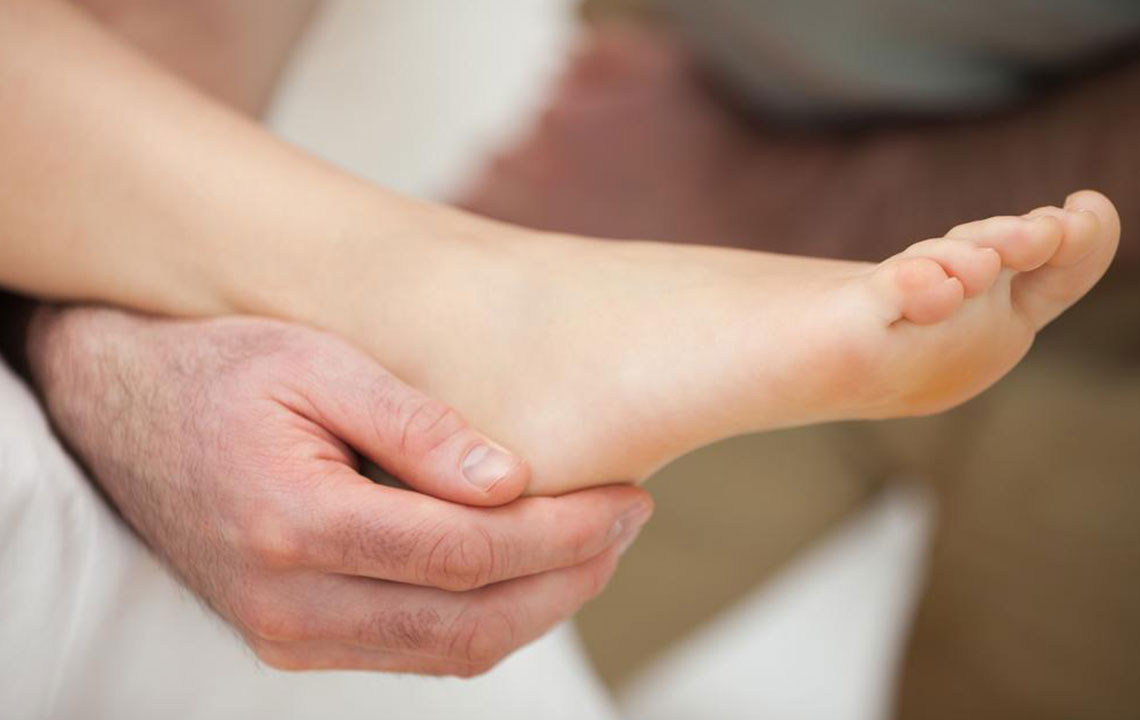How To Relieve Top of Foot Pain

Foot pain is a critical aspect of everyday life. It causes a hindrance to many daily chores performed physically. Activities such as walking and running become difficult to perform when there is a pain on the top of the foot. The foot is indeed one of the strongest parts of the body. It supports 1.5 times the weight of the body. Approximately 75% of the country’s population ends up suffering from top of foot pain once in their lifetime.
There are treatments available; however, it always depends on the nature and cause of the pain. There are several reasons behind top of foot pain. The following factors trigger top of foot pain in addition to the treatment suggested for the same.
Stress fractures
The condition is characterized by a small break in one of the foot bones, which is common to metatarsals. The general symptoms of the problem are that suffer feels tender on touching and swelling around the area.
The causes of this particular problem are overloading foot such as excessive jumping, running, and kicking. Treatments for the problem include rest, ice, foot brace, medications, and surgery.
Extensor tendonitis
It is inflammation and irritation of the tendons on the top of the foot. It can be recognized by swelling and bruising on the top of the foot. It may be uncomfortable wearing shoes. It is caused by wearing shoes that are tight, spending long hours on foot, calf tightness, and altered foot biomechanics. It could also be uncomfortable to walk and run in this condition.
It is recommended to change the way you wear your shoelaces. You can also use orthotics, ice, rest, stretch the calf muscles, and use ultrasound to detect the actual problem.
Sinus Tarsi Syndrome
It is a rather uncommon foot problem that starts from the top of the foot and spreads toward the external section of the ankle. It is characterized by irritation and inflammation around the Sinus Tarsi blood vessels , which is located between the heel bone and the ankle.
It is caused by inability and results from an ankle sprain. Poor foot biomechanics can also be the reason behind this condition. It can also be caused by repetitive activities such as basketball. It can be treated by exercise and ice, stability training and joint mobilizations.
Mallet Toe
Mallet toe is a common top of foot pain that affects the toes. It is damage to the toes that affect the position of small toe bones. The symptoms are stiffness and pain in the toes and it causes abnormal toe positions. The problem related to the condition is calluses and corns that usually develop after the toe injury, arthritis, neural or vascular problems. It can treat with wearing well-fitted footwear.
Gout
It is a common top of the foot pain that is more around the big toe. It is a type of inflammation due arthritis that is caused by increased levels of uric acid. It causes crystals to form in joints. This problem is more common on the big toes. It starts with sudden intense pain, redness, swelling, and tenderness. It commonly occurs at night. Symptoms go away in a couple of weeks.
The cause of the condition cans diabetes that makes you develop gout and obesity. The condition can be treated using ice, medications, and steroids.
Nerve entrapment
It occurs when the top of the foot gets pinched. It is caused by swelling due to injury, wearing tight footwear or due to dropping something on the foot. It gives shooting pain on the top of the foot. There can also be pain that matches pain from needle and pins. To treat the condition, prefer wearing good fitting footwear. You can also rely on RICE, which stands for rest, ice, compression, and elevation.
Athlete’s foot
Athlete’s foot can occur anywhere on the foot. It affects around 15% of the population worldwide. It is fungal skin infection that is also called tinea pedis. It is caused by poor foot hygiene. Factors that lead to increased level of moisture in the foot trigger Athlete’s foot. These factors could be anyone who wears tight shoes and damp socks. The infection can pass from person to person. It can spread through sharing towels. Contaminated surfaces such as floors and showers are also reasons for the infection.
It causes foot pain on the top, side and bottom of the foot. If it is not treated, it can develop blisters and swelling. It can be treated by adopting good hygiene. You should also prefer staying barefoot. You can also take antifungal medications or apply tea-tree oil to get rid of the condition. If not cured in time, the problem can lead to amputation.


